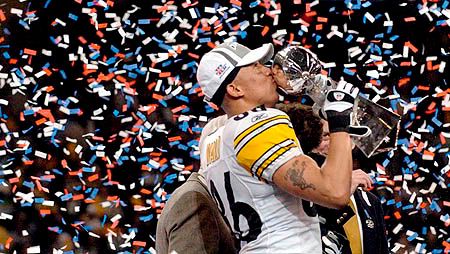Back in black
During the first weeks after Bon's death, the members of AC/DC didn't know what to do: whether to continue without Bon or split up. Of course, AC/DC could never be the same without Bon; when he died, something of AC/DC died with him. But Malcolm and Angus decided Bon would have wanted AC/DC to continue. So they pulled themselves together, and got down to the task of finding a new singer.
By the beginning of March, the media had lined up a number of likely candidates: former Easybeats vocalist Stevie Wright, an Australian called Alan Fryer (who was found too similar to Bon), and Londoner Gary Holton. Eventually a shortlist of two was drawn up: Terry Schlesher and Brian Johnson.
At the time, Brian Johnson was busy trying to get Geordie back together. But he took time out to audition, running through just two numbers with the band, namely 'Whole Lotta Rosie' and the Ike and Tina Turner 'Nutbush City Limits'. The following Saturday night, Malcolm called him and told him he had the job.
The recording sessions of AC/DC's eighth album took place at Compass Point Studios in the Bahamas, under the production guidance of Robert John 'Mutt' Lange. It was recorded during April and throughout May, over a period of six weeks. The album was completed by the end of May. On July 1, Brian Johnson made his debut appearance onstage with AC/DC at Namur in Belgium.
'Back In Black' was released on July 31. Within a couple of weeks, it was top of the UK charts and it stayed No. 1 for two weeks. In November, it reached No. 4 in the US charts and lingered in the top ten for over five months. In Australia, it went to No. 2. By now, Back In Black has sold over ten million copies worldwide, making it the biggest selling 'Heavy Metal' album of all times.
AC/DC hit the road for the first time with Brian Johnson in August. They toured in America for two months, then Britain through into November, and then in December finally returned to Australia. They toured in their home country for the first time since 'Dirty Deeds Done Dirt Cheap'. The year 1981 began with some more dates in Japan and Australia.
Demand for AC/DC grew to such a point in America that Atlantic finally released the initially rejected 'Dirty Deeds Done Dirt Cheap' album in May 1981. It went No. 3 in the US charts where it sat for four weeks (from May 23 to June 20) and even topped 'Back In Black'.
In June 1981, in the very first issue of Kerrang!, AC/DC were officially credited as having recorded the greatest Metal song of all times, when 'Whole Lotta Rosie' was voted top Heavy Metal song.
On August 22, 1981, AC/DC received the final confirmation that they were now one of the very biggest rock bands in the world. They were offered the chance to headline the second annual Castle Donington Monsters Of Rock festival.
For those about to rock
The recording of AC/DC's next album took place in Paris with 'Mutt' Lange. The task wasn't proving easy. The main cause of concern was the fact that Lange was apparently finding it very difficult to get the right kind of sound for the record. Lange solved the sound problems by hiring a mobile recording unit from England.
The album, titled 'For Those About To Rock We Salute You' was released in November 1981 and was immediately a worldwide commercial success. It climbed to No. 3 in the UK charts. Just prior to the release of their new album, no less than seven AC/DC albums appeared in Kerrang!'s All-Time Top 100 Heavy Metal Albums chart. In February 1982, 'Let's Get It Up' became the band's biggest hit single to date, making No. 13. Later in July, the title track itself made No. 15 in the UK charts.
In America, AC/DC were still increasing in fame. 'For Those About To Rock' became their first chart-topping album in the US. A huge tour of the States proved that they were attracting bigger audiences than ever.
The 'Cannon and Bell' tour reached the UK during late September. This time the band moved out of the halls and into the arenas, playing the likes of the Birmingham NEC and Wembley Arena in London.
By the end of 1982, AC/DC's position as the top rock band around was cemented when Kerrang! published the results of its readers' poll. AC/DC were voted 'Top Band', Angus was 'Top Guitarist', Cliff was 'Top Bassist', the band were voted as having produced the 'Best Live Gig' and 'For Those About To Rock' was the 'Best Single'. Brian was third top male vocalist, Phil was second best drummer, 'Let's Get It Up' finished sixth best single and Angus was amazingly second as 'Male Pin-Up'.
Flick
After touring most of 1982, the band took a long break. It was several months before AC/DC started working on their next album. The recording sessions took place at Compass Point Studios in Nassau.
Midway through the recording sessions, Phil Rudd was fired. At the time, no reasons were given for his sudden departure. But years later, with Phil's drug problems no longer a secret, the truth emerged. On the 'Cannon and Bell' tour, he was hallucinating about finding strangers in his room. To make matters worse, there were personal difficulties between Malcolm and Phil. Their relationship progressively deteriorated, to the point where a physical confrontation eventually took place. Two hours later Phil was flying home; he was out.
The new record was engineered and mixed by Tony Platt and produced by the band themselves. Released in August 1983, 'Flick Of The Switch' eventually reached No. 4 in the UK charts. But 'Flick Of The Switch' was a relative commercial slip. It only reached No. 15 in the US charts. In the 1984 Kerrang!'s readers' poll, AC/DC won no category, ending up as fifth top band and were also considered eighth biggest disappointment of the year.
Returning to London, the band desperately sought a replacement for Phil Rudd. Eventually an anonymous ad was placed in the music press: 'Heavy Rock drummer wanted. If you don't hit hard, don't apply'. After a number of trial runs, 20-year-old Simon Wright was given the job. By October 1983, Simon had made his live debut in Vancouver, Canada.
During the Winter, AC/DC toured through the States and Canada. On August 19, 1984 AC/DC became the first band to return as headliners at the fourth Monsters Of Rock festival at Castle Donington. After Donington, the band undertook a series of dates in Europe, which included more 'Monsters Of Rock' festivals. However the biggest festival of all came in January when AC/DC joined in the very first Rock In Rio in Brazil. The band did two nights at the festival.
After Rio, the band took another lenghty break...

 Stumble It!
Stumble It!













No comments:
Post a Comment